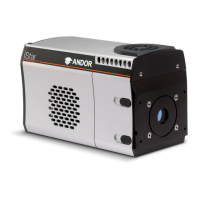Appendix
ACCUMULATION
Accumulation is the process by which data that have been acquired from a number of similar scans are added together
in computer memory. This results in improved signal to noise ratio.
ACQUISITION
An Acquisition is taken to be the complete data capture process that is executed whenever you click Take Signal, Take
Background, or Take Reference on the Acquisition Menu or whenever you click the button
A/D CONVERSION
Charge from the CCD is initially read as an analog signal, ranging from zero to the saturation value. A/D conversion
changes the analog signal to a binary number which can then be manipulated by the computer.
BACKGROUND
Background is a data acquisition made in darkness. It is made up of xed pattern noise, and any signal due to dark
current.
BINNING
Binning is a process that allows charge from two or more pixels to be combined on the CCD-sensor prior to readout
(see section 5.3.3).
Summing charge on the CCD and doing a single readout results in better noise performance than reading out several
pixels and then summing them in the computer memory. This is because each act of reading out contributes to noise
(see NOISE later in this section).
The two main variants of the binning process are:
1. Vertical binning
2. Horizontal binning
In addition there are several binning patterns that tailors the main binning variants to typical application usage.

